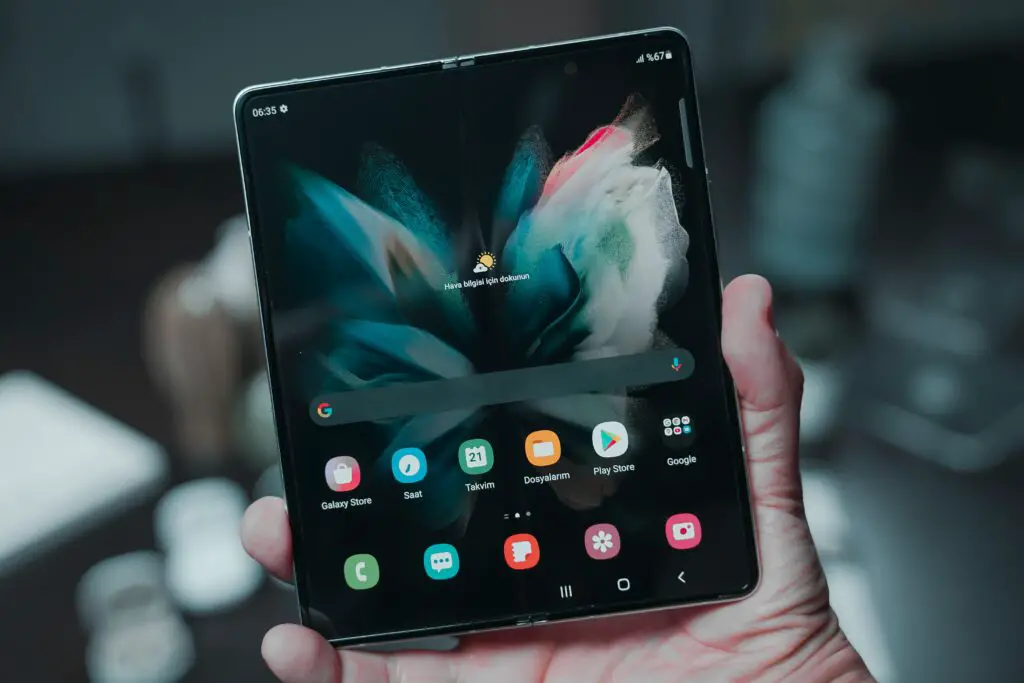There are a lot of solid reasons to use a vertical display. You can combine a horizontal and vertical monitor to create a fantastic dual-screen arrangement if you already have one.

Here are three of the best vertical computers on the market:
- Dell U2414H 23.8” Widescreen
- Dell Vertical Monitor UltraSharp 1909W
- HP VH240a 23.8-inch Full HD 1080p Rotating Portrait & Landscape, Tilt
- Samsung FT45 Series
- Asus VG248QG
- LG 24GN650-B
- Asus VN279QL
Dell U2414H 23.8” Widescreen
Dell’s U2414H sports a 23.8-inch screen with a maximum resolution of 1920 by 1080 and a 16:9 native aspect ratio. This is an LED monitor with an IPS panel.
4.9/5
- Energy Efficient: Achieve maximum performance while using the least amount of energy possible.
- VESA Compatibility: It may be mounted on any VESA-compliant wall, as well as desk arms and stands.
- Compatible with MHL: Connect your phone, play games without lag, and charge your phone while watching your game on a big screen.
2. Dell Vertical Monitor UltraSharp 1909W
A TFT active matrix panel is used in this LCD. It also includes a built-in USB hub, making it a very flexible computer accessory.
4.8/5
VESA-compatible gaming specs at a low cost Display size: 19 inches
3. HP VH240a Full HD 1080p Rotating Portrait & Landscape Monitor, Tilt
A 23.8-inch screen with a maximum resolution of 1920 by 1080 pixels and a 16:9 aspect ratio is included on the HP VH240a.
4.7/5
- VESA Compliant: It can be mounted on any VESA-compliant arm or stand.
- Pivot Capabilities: Change the angle to suit your needs.
- Ergonomic design for the best viewing experience
4. Samsung FT45 Series
Tilt, swivel, height, and pivot are all adjustable on the Samsung FT45’s stand. It offers the highest ergonomic comfort, and the monitor’s 100 X 100 Vesa support lets you mount it on a wall or in a multi-monitor setup.
A 24′′ IPS Panel with a 75Hz refresh rate and a 1920 x 1080 pixels FHD resolution produces sharp, bright visuals with a wide viewing angle.
5. Asus VG248QG
Asus VG248QG comes with a full HD resolution (1920 x1080 pixels) Display with an overclockable 165Hz (supports 144Hz) quick refresh rate and 0.5ms (GTG) reaction time on a 24-inch screen.
Only the Nvidia G-SYNC technology eliminates stuttering and screen tearing, resulting in the smoothest possible gaming experience.
Eye strain is reduced thanks to its eye care technology, which includes a flicker-free display and a blue light filter.
6. LG 24GN650-B
The tilt, height, and adjustable pivot stand of this LG Monitor are its key selling points, providing comfort during eye strain.
One of the best features of any gaming monitor is the 1ms IPS response time and the 144Hz refresh rate. It has an sRGB color gamut of 99 percent and a 3-Side practically borderless display with HDR 10 technology.
7. Asus VN279QL
The Asus VN279QL sports an ultra-thin bezel of only 8 mm, making it ideal for multi-screen setups.
Tilt, swivel, and pivot height adjustments are included in an ergonomically designed stand. It’s possible to mount it on the wall for a more comfortable viewing angle.
ASUS VividPixel Technology is employed for crystal-clear and detail-oriented delight. With AMD FreeSync Premium technology, gamers can enjoy seamless, fluid movement in high-resolution and fast-paced games.
When playing any game, it almost eliminates screen tearing and stuttering.
VESA
If your monitor complies with the VESA (Video Electronics Standards Association), you can use the mount to mount it vertically rather than horizontally.
Vertical monitors were first introduced by several companies in response to changing preferences in aspect ratios.
Aspect ratios evolved from 4:3 to 16:9 to 16:10 and beyond, as movies and videos demanded larger displays.
It’s also excellent for your eyes to use a vertical display. It makes it easier to concentrate on a certain screen region and its contents.
The advantages of using a vertical monitor rather than a horizontal monitor
Let’s take a look at some of the reasons why a vertical one is preferable to a horizontal one.
You can use this program to quickly edit portrait films for social media stories and vertical advertising campaigns.
- Increased Productivity: Anyone whose employment requires them to do a lot of coding may find scrolling websites boring. Scrolling time is greatly reduced when more material is displayed on the same screen than what is displayed on each horizontal screen.
- Increased visibility: Allows for more functions to be observed, which improves fluidity. You can see at least three times as much material with vertical displays than you could with horizontal screens.
- You’ll be able to react more quickly as a result of this. This rule applies to any work that requires you to read or write long-form content.
- Coder: If you’re a coder, you can evaluate a large number of lines of code on one screen. It also enables them to identify any code errors and make suitable adjustments and corrections.
- Streamer: You can video chat while reading long comments as an internet streamer. You can also participate in debates to keep track of messages before they disappear.
Conclusion
On a small workstation, there are two widescreen monitors. Each would use up a sizable chunk of the desk’s space. A vertical display is a preferable choice in this case. It takes up less space on a desk or work surface than a horizontal configuration.
Consider modifying one horizontal display and one vertical monitor using the same workstation. In the portrait position, a monitor takes up half the horizontal size of a standard monitor, allowing you to save a lot of desk space.
FAQS
Are all monitors capable of working in portrait mode?
Yes, you can use your monitor in portrait mode if it’s VESA compatible.

